You have finally purchased your dream off road vehicle and don’t you just love how awesome it looks in your driveway with its huge wheels and imposing presence? Now that you have stared at it adoringly for a few days, don’t you want to get it out of your driveway out on an off-road adventure? If the answer is yes, you’ll need to take several steps to make the transformation.
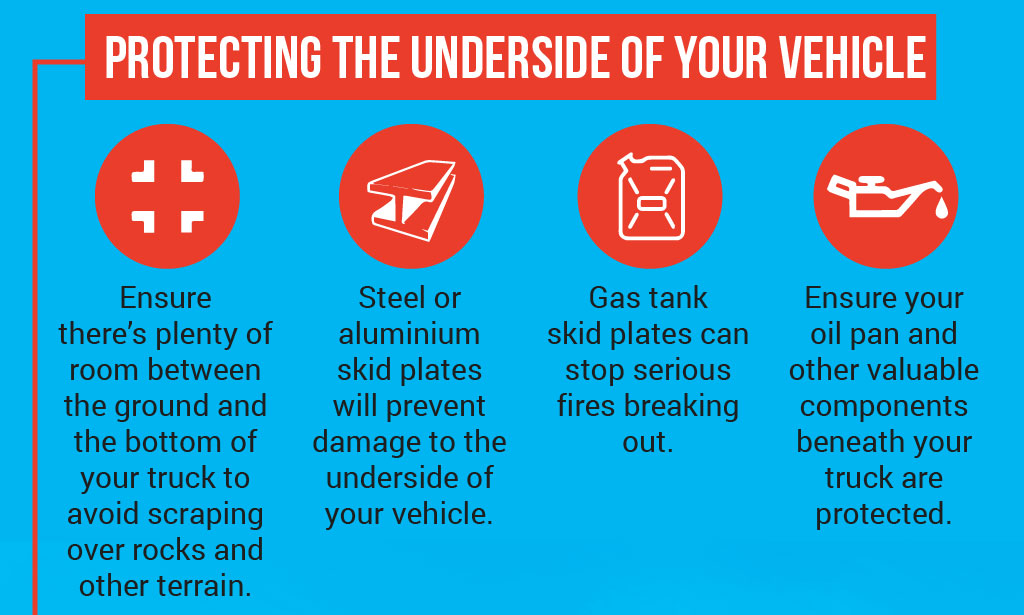
Protecting The Underside Of Your Vehicle
When you go off-road, you’re going to encounter several natural challenges, including stumps, mud, rocks, roots and deep puddles.
- Be sure that your vehicle is high enough off the ground that you will avoid scraping its under-carriage.
- If your vehicle is in danger of being damaged, make sure to install skid plates on its under-side. These can be made of either steel or aluminum and are an excellent investment.
- You can also purchase skid plates that protect your gas tank and cushion it against impact, thereby markedly reducing the chances of fire.
- Don’t forget to protect all of your truck’s essential under-parts, including the oil pan, with good skid plates.
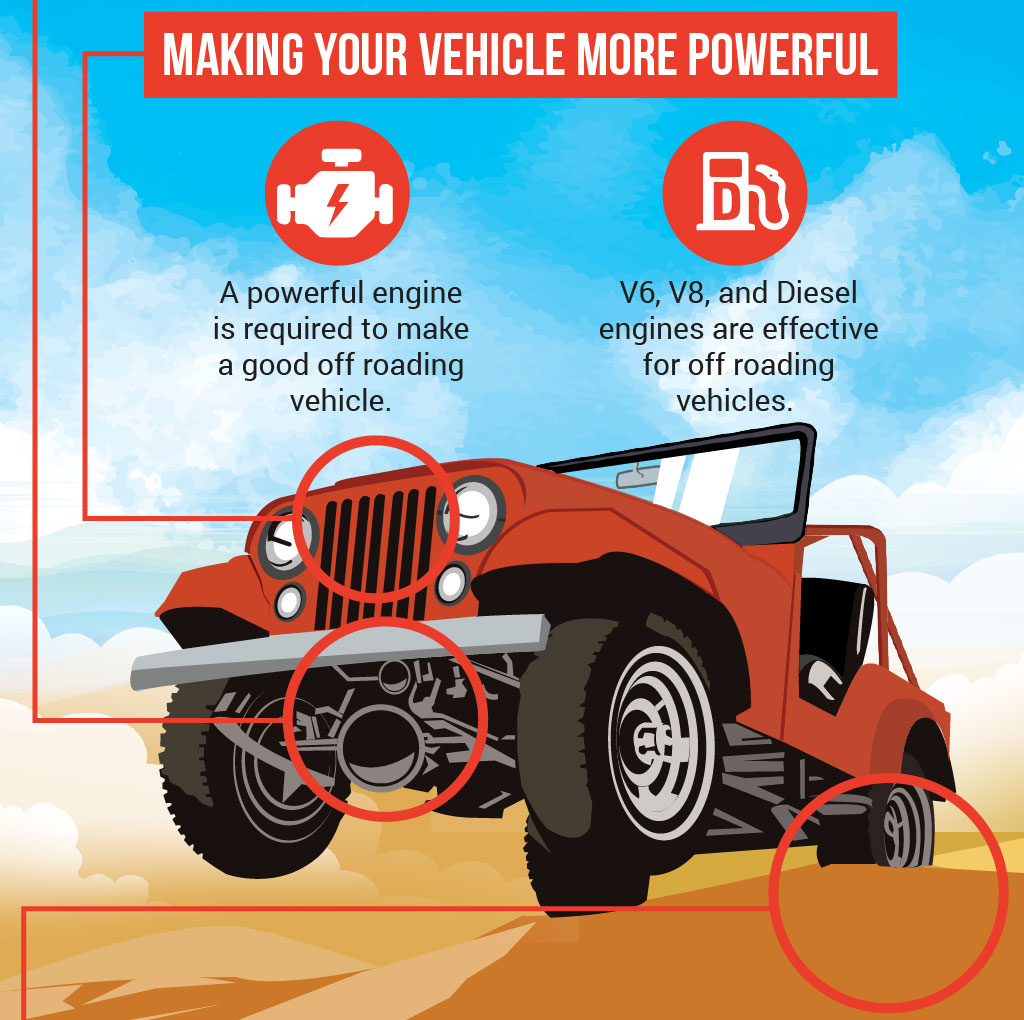
Making Your Vehicle More Powerful
- Power is a must. If you plan to successfully navigate rugged off-road terrain, you must have an engine that is capable of giving you the drive and torque you need.
- If your vehicle does not have a V6, V8 or diesel engine, it simply does not have what it takes for an off-road adventure. For instance, you can’t expect a 4-cyllinder engine to rescue you from a mud pit.
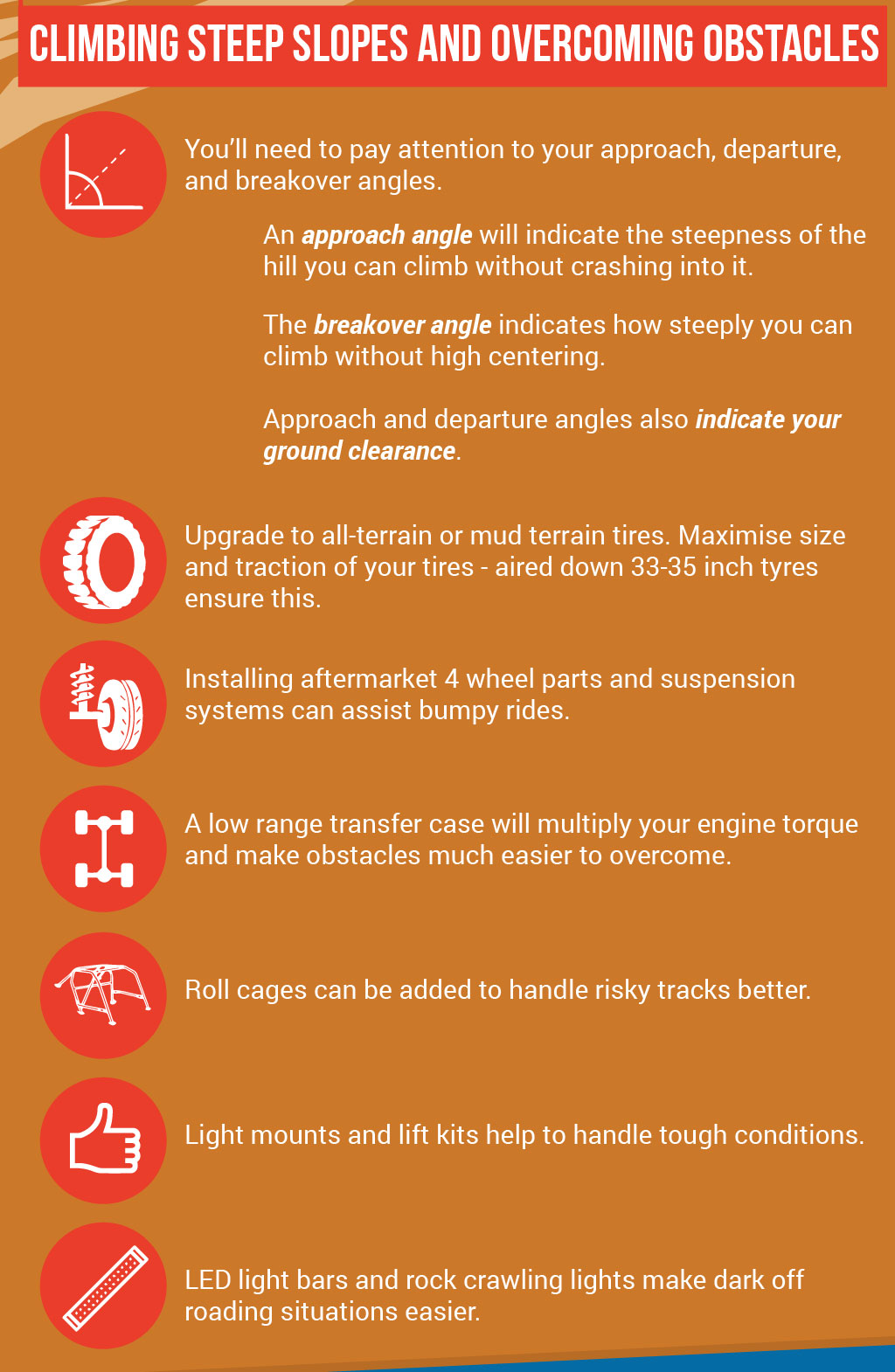
Climbing Steep Slopes and Overcoming Obstacles
Part of the fun of off-road driving involves taking your truck to places no standard vehicle could go. If your truck is going to fill that bill, you need to understand the concepts of approach, breakover and departure angles.
- Imagine you are approaching a ramp. If it is too steep, your bumper will hit it before your tires do. An approach angle is the maximum angle from the ground that an incline can have that your vehicle can still clear. Measure your car’s approach angle by placing one end of a yardstick where the front of your front tire touches the ground. Lift the other end of the stick until it touches the lowest point of the front of your car, generally your bumper. This is your approach angle. Never climb a hill steeper than this or go over an obstacle higher than where the yardstick meets the bumper.
- The departure angle is the same principle but instead applied to your rear bumper and wheels.
- Break-over angle refers to the angle between your tires and your truck’s midsection. If this angle is not wide enough, your truck can be scraped or otherwise damaged when you are coming down off a rock or some other obstacle.
- Update your tires. This means being sure to get tires made of strong rubber with tough sidewalls to protect against jagged rocks. They also need to have deep tread. Size truly does matter, so get at least 33 or 35-inch tires that are aired-down to enhance traction.
- Obtaining aftermarket parts can vastly enhance your off-road experience. If you plan to use your truck or SUV predominantly for off-road enjoyment, purchase a high-quality solid axle to maximize wheel control and traction. Note, however, that these axles can make driving on flat surfaces difficult.
- Get a low range transfer case. This product will distribute your engine power and send it to all four of your tires via the front and rear axles. As a result, you can breeze through and over virtually any obstacle you encounter.
- Adding a roll cage can provide protection in the event that your vehicle flips over. Although it offers a lesser degree of protection, you might also consider installing a roll bar behind the driver’s seat.
- Install a lift kit to increase the ride height of your vehicle. As a result, your approach, breakover and departure angles can be steeper. However, road holding can be impaired.
- When you’re out in the middle of nowhere in dark, stormy or foggy conditions, you will appreciate having a rugged light mount that protects your illumination from damage, allowing it to continue to light your way no matter how rough your adventure might be. Take advantage of the high-quality LED off-road light bars and rock crawling lights to enhance your safety. Off-roading can provide plenty of adrenalin rushes without adding unnecessary danger from dark conditions to the mix.
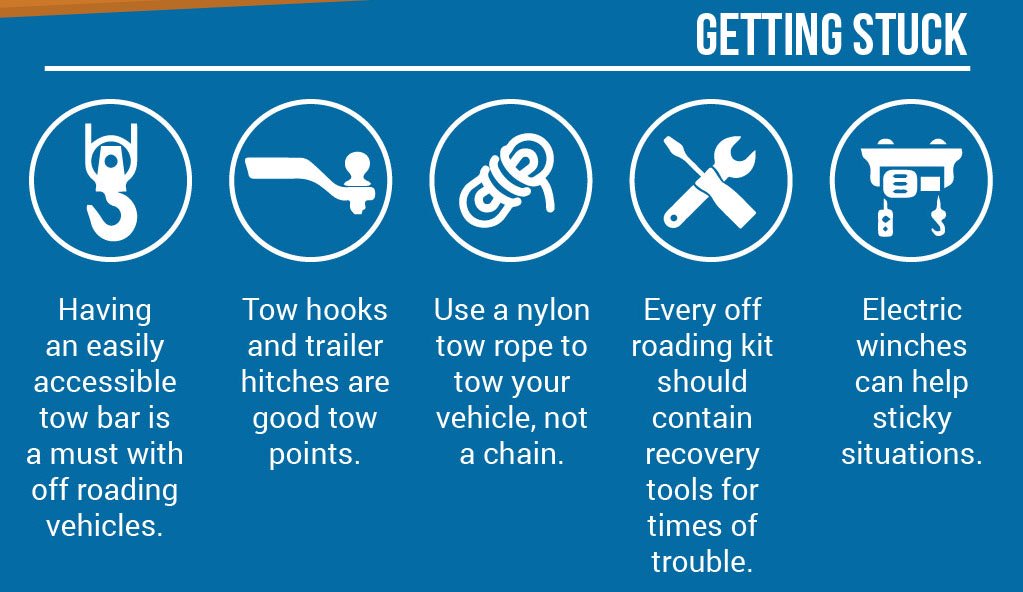
Getting Stuck
- Sooner or later in your off-roading career, you will get into a situation that you will not be able to extricate yourself from without help. A tow bar is an absolute must if you plan to tow your vehicle behind a truck or motor home. Having one readily available can be a life-saver.
- Use tow hooks or trailer hitches as excellent tow points.
- Don’t use a chain when towing your vehicle as it can cause damage or injury should it become detached.
- When, not if, you run into a sticky situation off-road, having a well-stocked recovery kit is key. It should include electric winches, heavy-duty gloves, a D-ring shackle, some choker chain and a towstrap. It also doesn’t hurt to include a folding shovel in your arsenal in case you need to do some serious dirt-moving.

Embed This Infographic
Copy and paste the code below to get this infographic onto your website or blog.


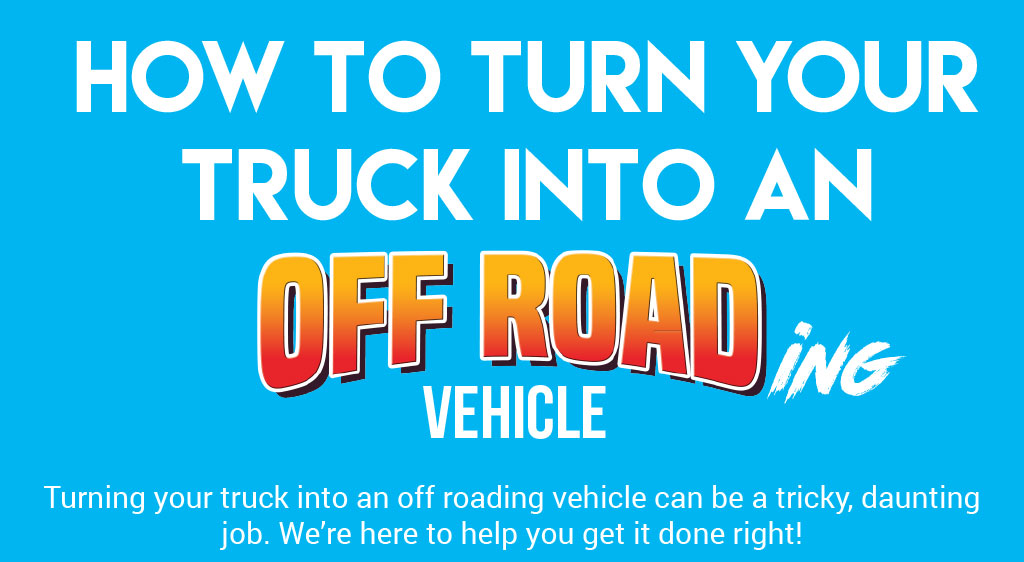
Post Comments
You must be logged in to post a comment.
click here to login